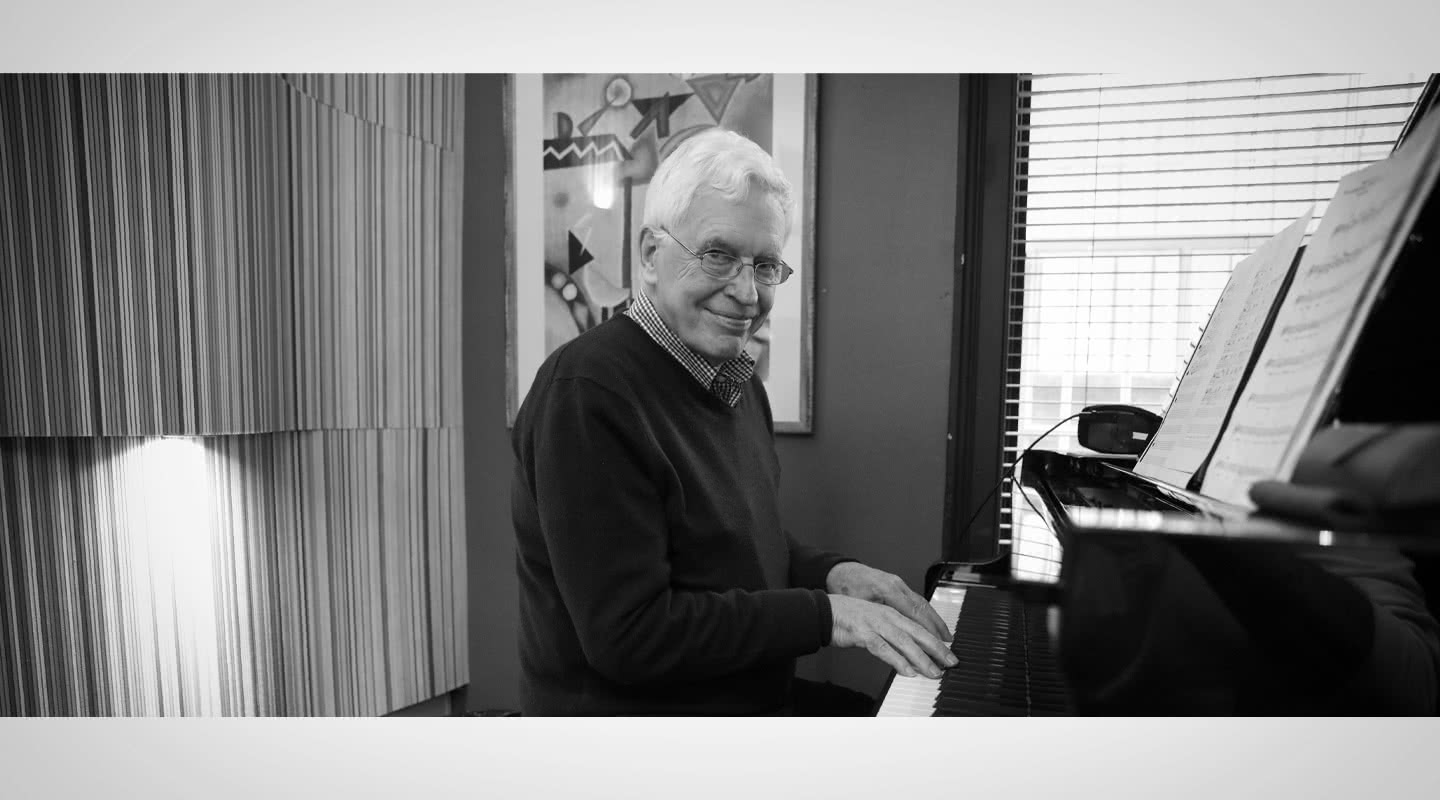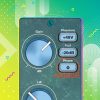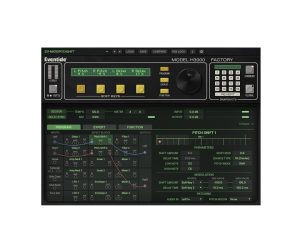
Vale, Billy Woodman (1946-2022)
Greg Simmons on the legacy of Billy Woodman.
Billy Woodman changed my life. Let me put that into context…
I’d spent much of the ‘80s working in studios and venues around Melbourne, and had embraced the freelance sound-engineer life to the point of hating it. My immune system was shot due to substance abuse, my mind dreaded the thought of spending 15 hours per day in rooms that could not even support plant life beyond mould and mildew, and my doctor had given me an ultimatum: choose a different career path or die.
I chose to teach and write about sound engineering, rather than doing it. Breaking free of the magnetic pull of Melbourne’s underground music scene, I moved to Sydney, took on the role of editing the Sonics Yearbook, and became passionate about mountain biking and the great outdoors.
One day Lesley Sly, then editor of Sonics magazine, asked me to review ATC’s SCM20 passive studio monitors. Curbing my lack of enthusiasm (“Another pair of studio monitors, meh…”), I accepted the job and received two relatively small but heavy monitors, a worthy amplifier, and a collection of CDs from boutique audiophile labels I’d never heard of. After the first listening session I was, uncharacteristically, lost for words — not just for the review, but for my life. The supplied CDs contained details I’d never heard before in recordings, and the ATC speakers were revealing them. I pulled out some of my own recordings, things I had multitracked over weeks or months in 24-track studios and thought I knew every little nuance, and yet, through these speakers, I was hearing new things and wondering why I’d never noticed them before. What kind of trickery was this?
As part of the review process I had the fortune of interviewing Billy Woodman, ATC’s founder and chief designer (that interview was published in Sonics magazine many years ago). I wanted answers. How were these speakers making previously unheard details so audible? Surely there must be some kind of deception? Nope. Every one of Billy’s answers was based on solid science, tests and measurements, tinged with a subtle hint of indignant disbelief that such things even needed explaining. I have no idea if Billy had any allergies, but I’m willing to bet ‘snake oil’ would’ve been one of them. After speaking with Billy I came to realise that the ATCs weren’t revealing anything, they simply weren’t hiding it in distortion and masking as most other monitors up to that time did.
Some years later I was starting a new magazine, AudioTechnology. For the premiere issue I had interviewed Rupert Neve about his latest product designs for AMEK, I had interviewed Stephen St Croix about his design work on Ensoniq’s PARIS DAW, and I had a chance to interview Billy Woodman about the latest version of the ATC monitors mentioned above: an active model called the SCM20A SL Pro, featuring ATC’s SLMM (Super Linear Magnetic Material) which had reduced driver distortion by an order of magnitude. I’d recently purchased a pair of these monitors and was impressed by their very low distortion figures, which were more akin to an amplifier than a speaker. Again, I went through a similar listening revelation as the one described above. Again, I wanted answers. Again, Billy delivered them with his characteristic blend of solid science, tests and measurements, and that subtle indignant disbelief that such things even needed explaining. Reflecting upon that first issue I realised that Rupert Neve, Stephen St Croix and Billy Woodman all had something in common: they were all audio equipment designers who had one foot firmly in the objective world of tests and measurements, the other foot firmly in the subjective world that things need to sound good, and an unquestionable understanding that great audio products stood solid in both worlds.
So how did Billy Woodman change my life? That first experience of reviewing the SCM20 monitors described earlier — and especially Billy’s reassuringly confident, forthright and straightforward answers — rekindled a passion I thought was completely killed off. I became very keen on getting a pair of high quality mics and an equally worthy recording system just to make recordings that benefitted from the quality of my ATC monitors. Thus began an entirely new career for me, specialising in minimalist two-mic direct-to-stereo recording of acoustic music. It started with community choirs in local halls, evolved to regularly recording the world’s finest touring chamber music artists in some of Australia’s finest venues, and ultimately took me to remote places in Asia and the Himalaya to record traditional music. I’m writing this from Chiang Mai, Northern Thailand, where I regularly make forays to record the music of the surrounding hill tribes. I wonder where I’d be now if I’d said “No thanks” to Lesley Sly’s offer to review the ATC monitors and interview Billy Woodman?























During my time as Senior Sound at ABC TV Post Production I was given the task of assessing monitors for our five mix rooms, three of which are 5.1, and three tracklay suites. This formed part of the co-location move to Ultimo in 2003. The contenders for the speaker shootout were Duntech, JBL, Genelec, Dynaudio and ATC (SCM20). Like you, I was floored by the detail represented in these monitors but also the extraordinary dispersion. Alas, ATC did not get the nod as mixes were taking considerable longer to complete because of the revealed offending noise detail in recordings that needed to be excised. An excision that the punter at home would not appreciate – unless they had a pair of ATC’s! Also the range was quite limited twenty years ago. In the end Genelec won the day and all staff were very pleased with this selection especially after suffering the ear-scratching JBL 4412’s for far too many years.
As with you, a single listening experience with ATC was a revelation. I had first heard of ATC during my time with AMEK, after UB-40 installed their monitors at the Birmingham studio featured in our advertisements. The ATC brand was largely unknown in the States at the time with no presence outside the Hi-Fi market. When Fraser Jones was appointed as their first rep for the Pro Market around 1995, I immediately auditioned a pair and was astounded. I stayed up all night listening to CD’s that I thought I knew inside and out. I heard things that never had heard before. I finally went to bed around 6AM, exhausted but “converted.” CD’s with great engineering became even greater. Lanois and Mutt Lange recordings were rendered with incredible depth and detail. Conversely, a whole lot of lot of recordings sounded much worse as their mixes fell apart when rendered with accuracy and neutrality. It was an eye-opener. I will never forget the experience. I quickly sold a pair of SCM-20 to a wealthy chiropractor, who took my word that they were extraordinary when paired with Bryston amps. But I had great difficulty selling to US studios where initially only a few engineers appreciated their sound. A few, mainly those working with classical music, were enthusiastic. But many working in popular genres did not initially favor their presentation. Within a few years both Fraser and I had pretty much given up as regards their commercial potential in the US studio market. A new rep- Brad Lunde- was appointed. I briefly worked for him in 2004, so proud to be selling ATC again. This time around things were different as leading non-classical engineers came on board with great praise for them. I had always favored English studio monitors and frequently recommended Tannoy and Spendor to clients. But to me the ATC took accuracy, neutrality and depth of soundfield to a new level. After almost 30 years I still vividly remember that first listening session with ATC and treasure the experience.
We had similar ‘conversion experiences’, Lewis! One thing I vividly remember was listening to Peter Gabriel’s albums that were made at Real World (which had ATC monitors IIRC). What had always seemed to be a kind of atmospheric ‘texture’ in the background of many of his songs was revealed through the ATCs as layers of intricately detailed sounds, and I revelled in playing those albums to my audio buddies and asking how many had noticed those layers before. Most had not…